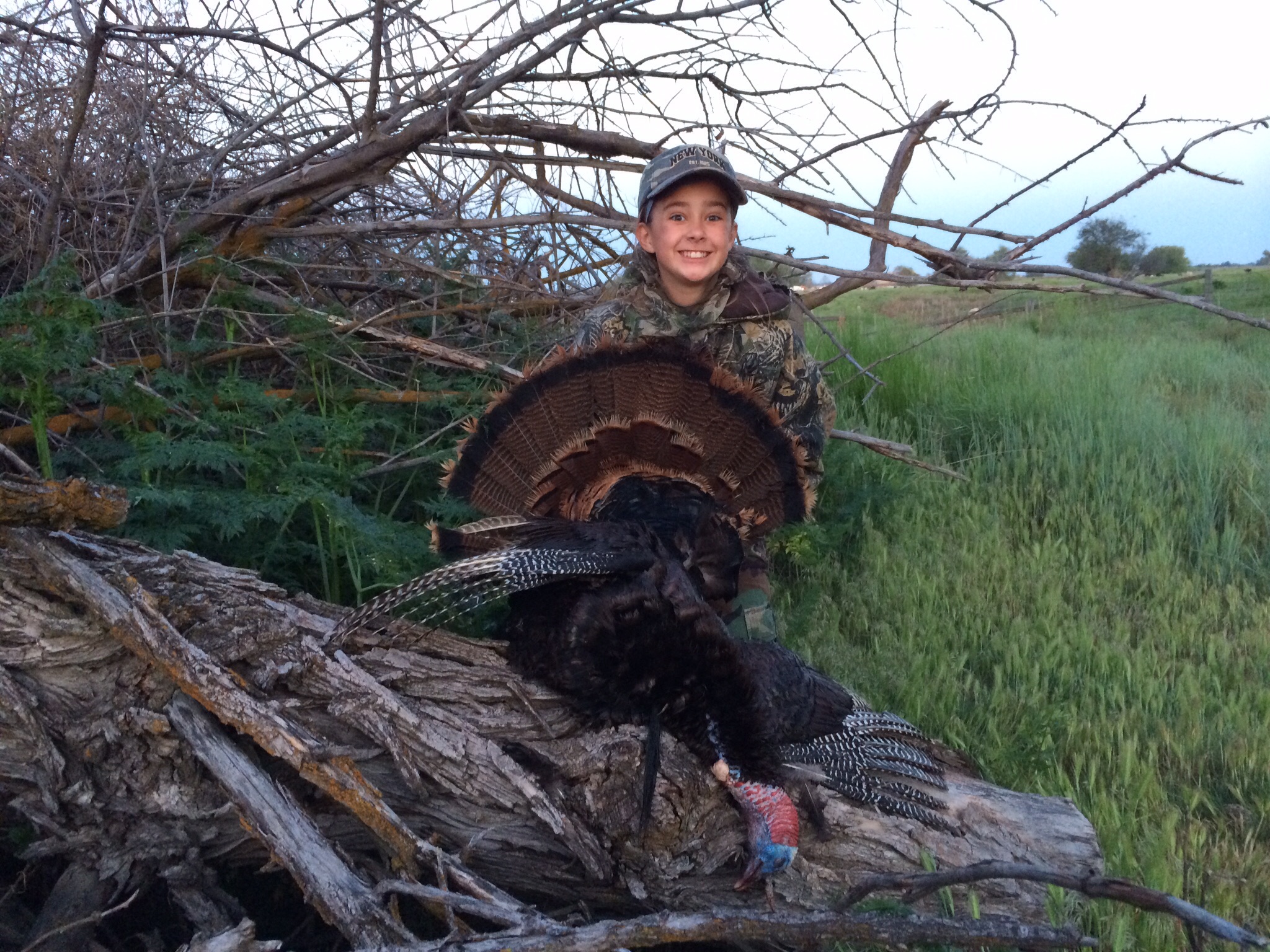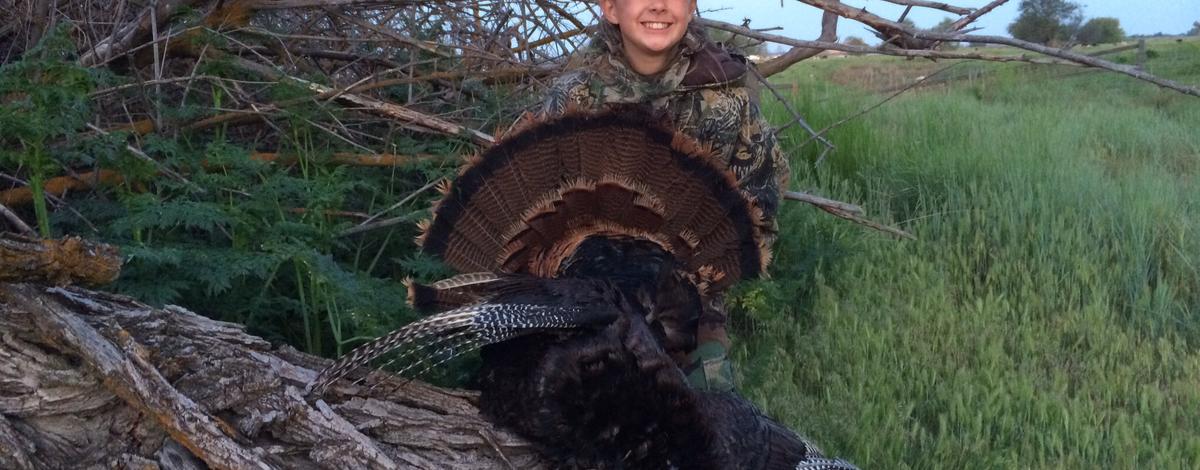According to Idaho Fish and Game biologists around the state, turkey hunters in Idaho can expect more of the same in 2021 — which is great news for hunters looking to bag a gobbler during the spring season.
“The turkey outlook for the 2021 spring season is looking pretty positive,” said Jeff Knetter, statewide upland game bird manager. “Turkey populations, in general, were pretty healthy heading into this winter. This winter was relatively mild throughout the state, and we’ve had no major events that give us cause for concern regarding turkey survival. Last year was good for turkey hunters, and there’s no reason to believe it would be different in 2021.”
Knetter noted that harvest was up in 2020, and so were the numbers of turkey hunters in general season hunts, which is something that wildlife managers would continue to monitor going forward.
“I believe that spike in the number of turkey hunters in the spring of 2020 may have been due to the pandemic, but we will keep an eye on this to see if that increased participation continues and has the potential to reduce turkey populations,” Knetter said.

Youth turkey season opens April 8, and the general turkey season and many controlled hunts open April 15. Hunters can see which units have general hunts in Fish and Game's turkey hunting rules, in addition to details about the seasons.
Hunters will find most general hunting opportunity in the Panhandle, Clearwater, Southwest, and Southeast regions, while most other areas are limited to controlled hunts. In each of the regions with general hunting opportunity, turkey populations are faring well, and the hunting outlook is as good or better than recent years.
Fish and Game’s regional staff gave an overview of what’s happening with turkey hunting in their regions:
Panhandle Region
The outlook for spring turkey hunting in the Panhandle Region looks good. Valley and lowland snowfall in parts of the region was relatively mild and winter survival has been high. Production the last few years has been good and hunters should see plenty of turkeys again this spring. Lower elevations are quickly greening up and current conditions should help spread turkey numbers out across the landscape.
The highest concentrations of turkeys in the Panhandle can be found in the lower elevations of GMUs 1, 2, 3, 4, and 5. Hunters may want to look towards the lower Priest River and lower Coeur d’Alene River drainages, as well as the lower elevations adjacent to the Kootenai River for higher densities of turkeys. Units 2 and 5 also provide for good opportunities.
The Large Tracts Program offers public access to thousands of acres of prime turkey hunting lands. These are great places to start your pursuit. For more information, visit https://idfg.idaho.gov/access/large-tracts or find properties to hunt on Fish and Game’s Hunt Planner.
As always, please remember to respect the land and the landowner, and to ask permission prior to hunting private lands.
Micah Ellstrom, Panhandle Region Wildlife Manager
Clearwater Region
Overall, the spring turkey hunting outlook is good for the Clearwater Region. Relatively mild conditions during the majority of the past three winters should result in good overwinter survival. Although it’s too early to tell at this time, the past few years have had at or above average production. Consequently, turkey numbers this hunting season should be comparable to recent years.
Mild winter conditions were prevalent across the region this year. This should lead to easier access to higher-elevation portions of the region, but as always, access is dependent on weather and snowmelt between now and the opener. Lower elevations are already snow free and showing signs of spring green up.
Turkeys are present throughout all forested portions of the region with the highest densities found in and adjacent to the Clearwater River drainage up to the confluence of the Lochsa and Selway rivers, the Snake River drainage up to the confluence with the Salmon River, the lower Salmon River drainage up to White Bird and the Dworshak Reservoir area.
Good opportunities for turkey hunting are found on Craig Mountain Wildlife Management Area south of Lewiston, state and federal property, private property, as well as corporate timber land. The entire region is open to general turkey hunting.
A great place to start is Fish and Game’s Hunt Planner, a good tool for showing different federal land ownership. For information on corporate timberland, visit websites for the Potlatch Timber Corporation and the Bennett Lumber Company, as well as Fish and Game's Large Tracts Access Program, which provides public access to thousands of acres of private timber land.
Jana Livingston, Clearwater Region Wildlife Biologist
Southwest Region - McCall
The mild winter resulted in good turkey survival in Hunting Units 22, 31, 32 and 32A. Recent turkey counts along Highway 71 indicate the population is relatively stable following the shift to fall general hunts in 2020. Units 22, 31, 32A and 23 all have general spring turkey hunts, as does a portion of Unit 32. Although turkeys are typically found at low elevations in early spring, field reports suggest turkeys are already moving up in elevation this year, as snow is melting off quickly.
Motorized travel is restricted on Andrus WMA until May 1, but walk-in hunting is welcome. In addition, there is turkey hunting available on Access Yes! properties near Cambridge, Indian Valley, and New Meadows.
Regan Berkley, Southwest Region Wildlife Manager
Southwest Region - Nampa
The turkey outlook in the Nampa subregion of the Southwest Region is good. Winter conditions have been mild in the valley and we anticipate good overwinter survival in hunting Units 38 and 39.
In 2020, Unit 38 saw a dramatic increase in overall harvest numbers and success rate with the addition of the general spring youth hunt and increased control hunt tag numbers. We anticipate these harvest trends will continue into 2021. The primary limitation in Unit 38 continues to be access to private property where most turkeys reside. We ask hunters to be respectful of landowners and to always ask permission before hunting on private property.
Unit 39 harvest and success rates were stable in 2020. The general spring season should offer some good opportunities, turkeys follow the spring green up to higher elevations as the weather conditions warm, and should be available on public lands by opener.
Unit 33 harvest and success rates increased in 2020. Early season turkey opportunity is typically limited to private lands along the Middle Fork of the Payette. As the weather improves, birds will move up in elevation onto public ground.
Peter Ott, Southwest Region Landowner Sportsman Coordinator
Magic Valley Region
The Magic Valley has limited turkey hunting opportunities and only controlled hunts are available for turkey hunting in Unit 54. Turkeys are primarily found on or near Big Cottonwood WMA. Turkeys follow the snow line as spring progresses and are more widely distributed later in the season. We anticipate above average winter survival this year, but the overall population is likely depressed from a recent hard winter and poor nesting conditions several of the past years.
Jake Powell, Magic Valley Region Wildlife Manager
Southeast Region
Winter conditions were slightly below average this year, and as such, overwinter survival is expected to be high again. Hunters should expect similar to slightly increased turkey numbers compared to last spring. Many of the valley bottoms experienced earlier snow melt compared to last year, so hunters might expect slightly different distributions of birds this spring.
In the Southeast Region, hunters will find turkeys in hunting Units 70, 71, 73, 74, 75, 77, and 78. Highest concentrations of turkey are found on the western sides of the Bear River and Portneuf mountain ranges.
Other portions of the region have more sporadic and patchy distributions of turkey. Many of the turkeys in the Southeast Region are associated with private lands, and hunters are urged to be respectful of private properties and landowners when pursuing turkey.
Zach Lockyer, Southeast Region Wildlife Manager
Upper Snake Region
The Upper Snake Region has a small population of turkeys, mainly along the Henry’s Fork and South Fork of the Snake River. Turkeys are limited to controlled hunts only in the region.
Winter 2020-21 was normal to slightly below average for most of the region. Hunters will likely find most turkey hunting opportunities at lower elevations at the beginning of the season, but expand as snow recedes and as spring progresses.
Hunters should anticipate stable to slightly increasing turkey populations in the region, with anticipated success rates being stable. The region has a lot of private property along the Henry’s Fork and South Fork of the Snake River, so be sure to ask first to hunt on private land.
Randy C. Poole Sr., Upper Snake Region Wildlife Technician, Landowner Sportsman Coordinator
Salmon Region
With average winter conditions, the Salmon region is seeing good overwinter turkey survival. Winter population counts showed stable populations in the Challis area and significant growth in in the Salmon area. In fact, 2021 winter surveys in units 21A and 28 showed a 52 percent increase in wild turkey numbers from the 2020 survey. This population continues to grow and will hopefully result in increased hunter opportunity in years to come.
Currently, all turkey hunting in the Salmon Region is regulated through controlled hunts for both the spring and fall seasons. At this point, the vast majority of birds will be found on private lands and hunters are encouraged to get permission from landowners prior to applying for hunts. With this expansion in turkey populations and the rise in private land depredations, we hope to be able to offer more liberal seasons in upcoming years.
Dennis Newman, Salmon Region Wildlife Manager

